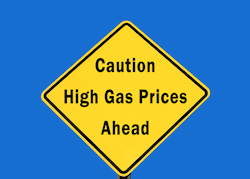A recasting of oil industry data from a recent NERA Economic Consulting study prepared for the American Petroleum Institute (API) found the oil industry would be economically harmed by more than $12.3 trillion in potential profits in 2015 if the Environmental Protection Agency (EPA) sets the Renewable Fuel Standard (RFS) obligations below statutory levels. The analysis, “Economic Impacts Resulting from Failing to Implement the RFS2 Program,” was conducted by the Biotechnology Industry Organization (BIO), and finds the same result; however, views the information slightly differently.
“The Renewable Fuel Standard was designed to drive investment in renewable fuel production, and some oil companies have partnered with biofuel producers to do just that,” said Brent Erickson, executive vice president of BIO’s Industrial & Environmental Section. “Since many of the oil refiners are publicly owned companies, they have a fiduciary responsibility to their shareholders to maximize earnings and generate a return on that investment.”
 Erickson continued, “The oil industry reported earnings of a paltry $77.2 billion for 2014, as prices at the pump fell during the year. But if EPA sets the RFS at the statutory volumes in 2015, the industry would be able to earn $12.3 trillion in profits this year by again raising the price of gasoline and diesel. The oil companies owe it to their shareholders to urge EPA to set RFS volumes at the statutory levels.”
Erickson continued, “The oil industry reported earnings of a paltry $77.2 billion for 2014, as prices at the pump fell during the year. But if EPA sets the RFS at the statutory volumes in 2015, the industry would be able to earn $12.3 trillion in profits this year by again raising the price of gasoline and diesel. The oil companies owe it to their shareholders to urge EPA to set RFS volumes at the statutory levels.”
According to BIO, the oil industry study from NERA Economic Consulting assumes that if EPA sets the RFS at levels established by the U.S. Congress, oil refiners will elect to export their products rather than sell them to American drivers. The resulting artificial shortage of fuels within the U.S, NERA’s proprietary economic modeling predicts, will raise gasoline and diesel prices to “outrageously high” levels – $93.64 per gallon for regular gasoline and $103.00 per gallon for diesel. NERA’s data indicates that ethanol is the lowest cost fuel component and that higher renewable fuel blends such as E85 would be the lowest priced fuel choice for consumers.
The major findings of BIO’s report include:
- E10 could be sold at $93.64 per gallon this year. E10 contains 10 percent ethanol, which costs $1.07 per gallon, and 90 percent BOB (gasoline blendstock) at $1.40 per gallon. The final cost of each E10 gallon is therefore under $1.37. That’s a potential profit margin of more than $92 per gallon!
- The U.S. Energy Information Administration projects that nearly 138 billion gallons of gasoline will be sold at an average price of $2.31 and 58 billion gallons of diesel will be sold at an average of $2.70 in 2015. NERA Economic Consulting forecasts the oil companies would reduce gasoline production to 93 billion gallons sold at $93.64 per gallon and reduce diesel production to 40 billion gallons sold at $103 per gallon. The potential profits, including the lower cost of production, exceed $12.3 trillion.
- E0 can only be sold at $23.49 per gallon, while the cost of the gasoline blendstock would likely be higher than the $1.40 for BOB. By insisting that E0 maintain 2.5 percent of the gasoline market when E10 is far more profitable, the oil companies would expect to forego more than $427 billion in potential profits.
- Since E85 is the lowest cost fuel to consumers in the NERA report, oil refiners can maximize profits by continuing to block consumer access to this fuel.

